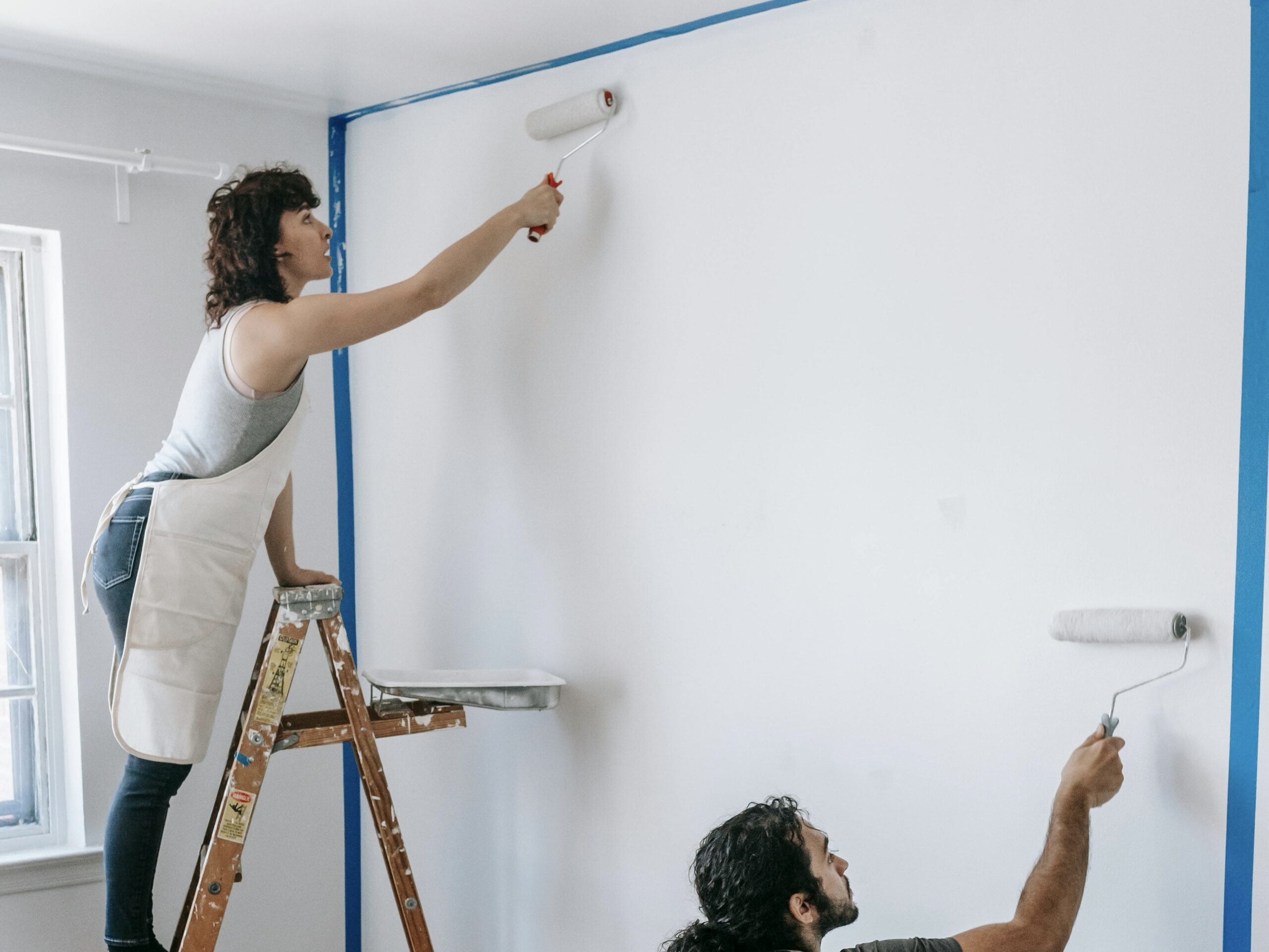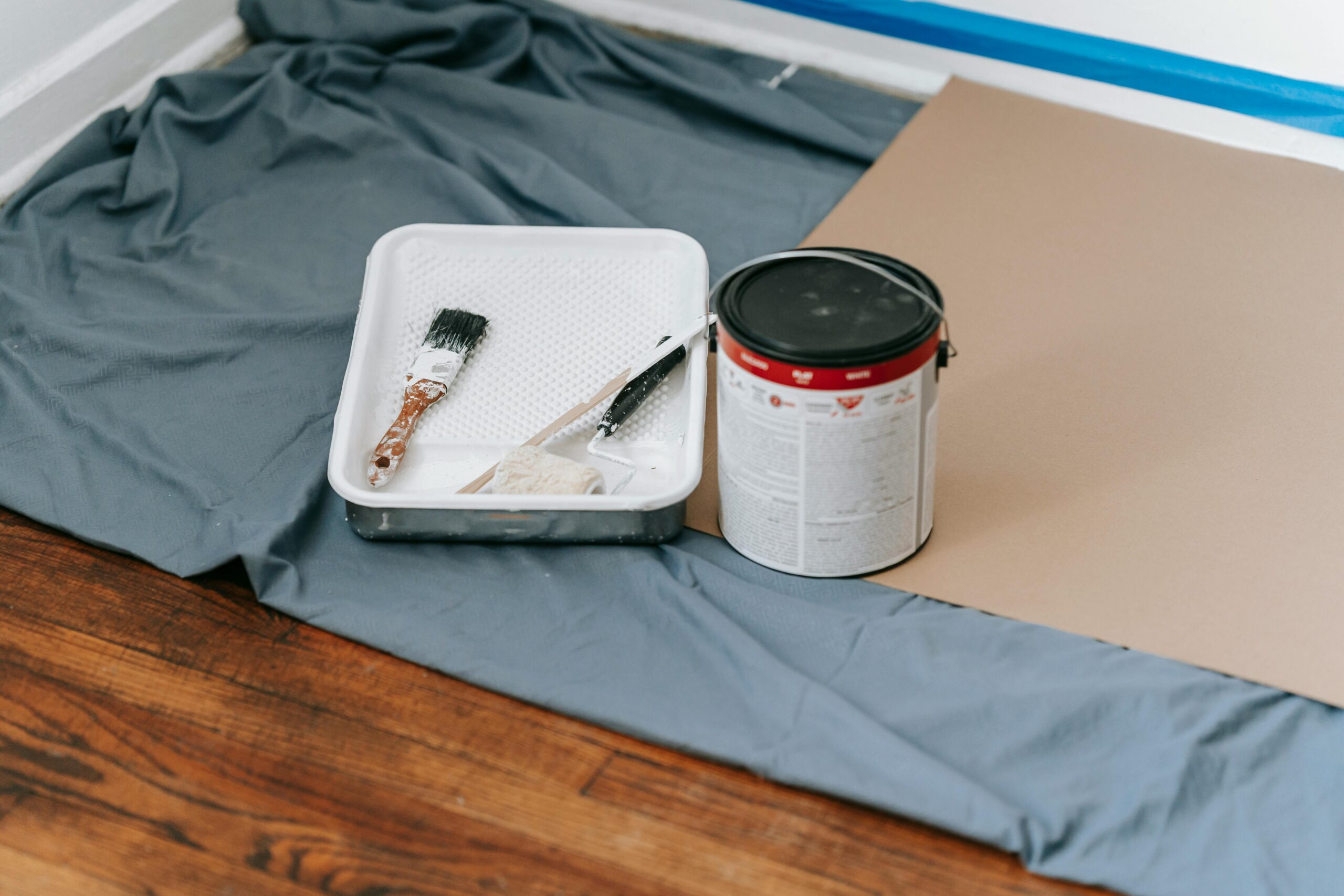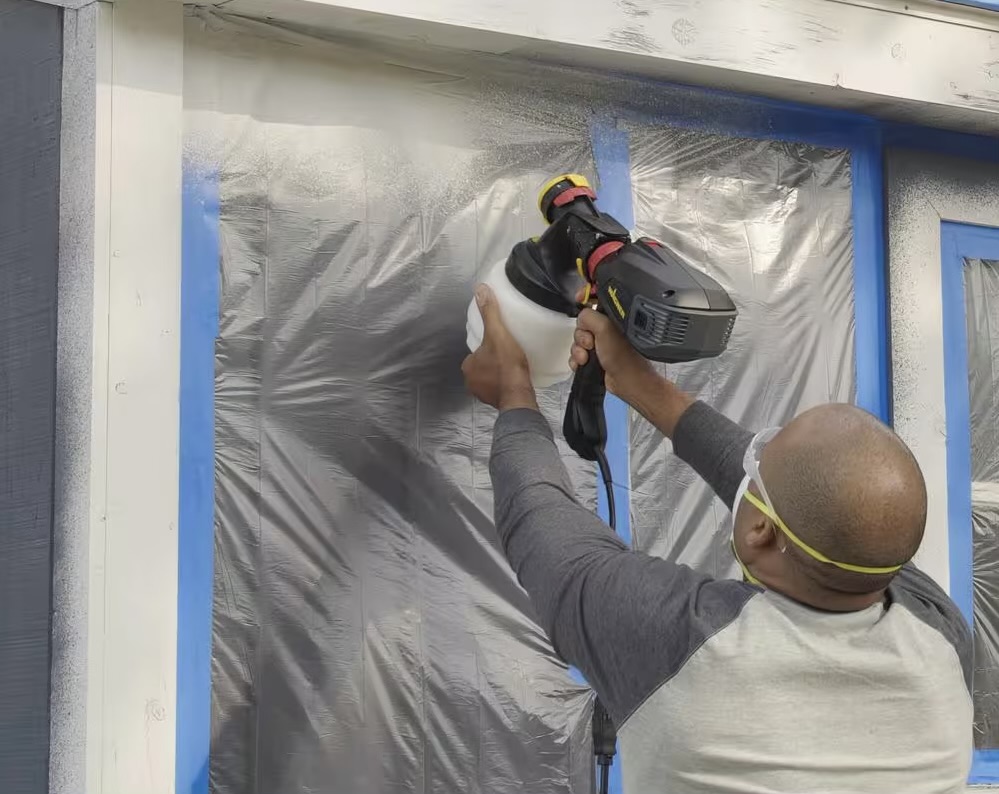Specialty paint stores and dedicated retail sections offer an extensive range of paint products, encompassing alkyd, latex, primer, stain-blocker, and enamel, alongside various sheens, including gloss, semigloss, satin, eggshell, and flat. For individuals embarking on a bathroom renovation, the vast array of options can appear overwhelming. Nonetheless, the underlying paint types are relatively simple. There are two primary paint categories: latex and alkyd. Everything else is just a variation.
Latex paint constitutes roughly 87 percent of paint sold in the United States. Although it once contained natural rubber, latex paint now incorporates a range of synthetic resins, with acrylic being the most effective. Much of latex’s appeal stems from its convenience. Much of latex’s popularity comes from its convenience.
Being a water-base paint, it enables simple cleanup of drips and spills with a damp sponge. Also, soap and water are suitable for cleaning brushes and rollers, followed by a thorough rinse.
🔍 DETAILED EXAMINATION – WHAT IS MEANT BY SHEEN?
Sheen refers to the degree of light reflection in paint. Flat paint maximizes light absorption and conceals surface imperfections. Eggshell paint provides a smoother surface, retaining some hiding ability while being more washable. Satin paint is more resistant to wear and suitable for high-traffic areas. Semigloss paint exhibits a subtle sheen and is often applied to woodwork, trim, cabinets, and doors. Gloss paint features a high-gloss finish but accentuates minor surface imperfections.
✅ WORK EFFICIENTLY – LATEX OR OIL?
For most homeowners, the choice between latex and oil-based paints hinges on drying time, odor, and ease of cleanup. This chart outlines other factors that may be equally significant. Additionally, it is crucial to review the fine print on the back of the can, as manufacturers typically offer guidance on whether latex or oil-based paints are best suited for covering existing finishes. If further guidance is needed, a toll-free number is usually provided.
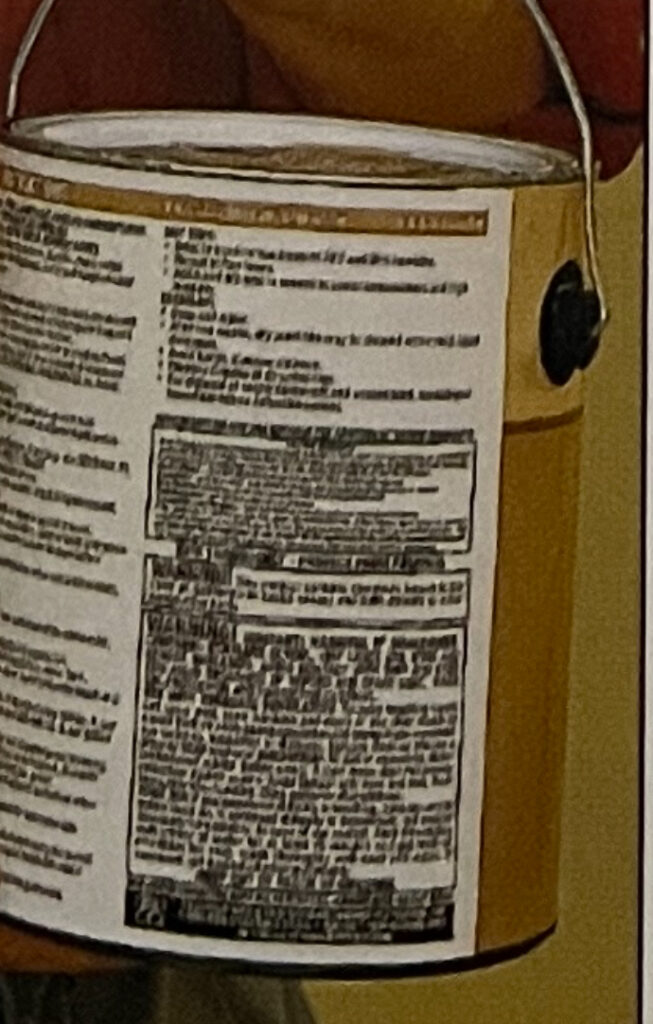
💰 CUSTOMER’S PURCHASING GUIDE. – READ THE LABEL ON THE PAINT CANISTER
Generally, the quality of paint can be evaluated by its price. Paint is one of those uncommon products for which the quality directly corresponds to the cost. Higher-quality paints are more expensive because they contain higher proportions of more expensive ingredients. This results in superior color, adhesion, and durability.
The Basics:
- A liquid carrier (water or mineral spirits) suspends the particles of paint so they can be applied. As the carrier evaporates, the paint dries.
- Pigments are finely ground, naturally colored solids that, when combined, generate the desired color. More intricate mixtures of pigments are employed in expensive paints. Higher percentages of titanium dioxide (Ti) result in whiter and brighter paints.
- Additives are chemical enhancements that improve paint mildew resistance, adhesion, and flowability. Kaolin (clay) is employed to regulate gloss. Some additives may be hazardous. To mitigate fumes or ventilation challenges during drying, opt for a brand labeled with low volatile organic compound (VOC) content.
- Binders can be made of vinyl acrylic, 100% acrylic, or alkyd-enhanced materials. The higher the percentage of acrylic resin, the harder and more durable the finish will be.
- The other ingredients listed are primarily filler materials. If used in substantial quantities, filler can diminish the vibrancy of the colors, potentially leading to the paint becoming powdery over time.
Primer basics
Regardless of whether you are using alkyd or latex paint, it is imperative to apply a primer as the initial coat. Primer serves a multifaceted purpose beyond being the first layer of paint. Specifically formulated to adhere effectively to various surfaces, primers establish a robust bond between the paint and the underlying substrate, including bare wood, bare walls, or existing paint. Without primer, paint tends to peel off. However, achieving a strong connection is not the sole function of primer. It also contributes to the final color of the surface, particularly when tinted. For tinted primer, aim for approximately half the color intensity of the top coat of paint. Once the primer coat has dried, apply a final coat of paint.
Latex primers are generally effective in most situations. However, professionals may opt for an alkyd primer when dealing with challenging or chalky walls. Latex can be applied over oil-based paints, and professionals frequently do so. Alkyd and latex have distinct drying properties. If more than five coats of alkyd paint are applied to an exterior wall, it may be prudent to continue using alkyd primers and paint.
Regardless of the quality of the paint, some stains persist in bleeding through a conventional primer. Therefore, it is advisable to select a stain-blocking primer in such circumstances. For instance, water stains tend to reappear once the paint has dried. Similarly, resin from the knots in wood will inevitably bleed through. Smoke stains, oil stains, and any red chalk used in chalk lines are also susceptible to bleeding, unless a stain-blocking primer has been applied.
Stain-blocking primers are available in both alkyd and latex formulations, available in aerosol and liquid forms. An alternative option is shellac, which can be used alone to block stains and serves as the base for other stain blockers. For sealing in stubborn stains with a single coat, it is recommended to use only stain-blocking primers that are alkyd or shellac-based.
Choosing a Sheen
Once you have selected your color and determined whether to use latex or oil paint, you still have five distinct sheen options to choose from: flat, eggshell, satin, semigloss, and gloss. Each sheen represents the extent to which the paint reflects light. A flat paint reflects approximately 5 to 10 percent of the light that illuminates it, while a gloss reflects 50 percent or more. These variations in light reflection significantly impact the visual appearance of both the surface and the color. A flat sheen appears duller and darker compared to the same color in a gloss, while glossy sheens highlight imperfections more prominently.
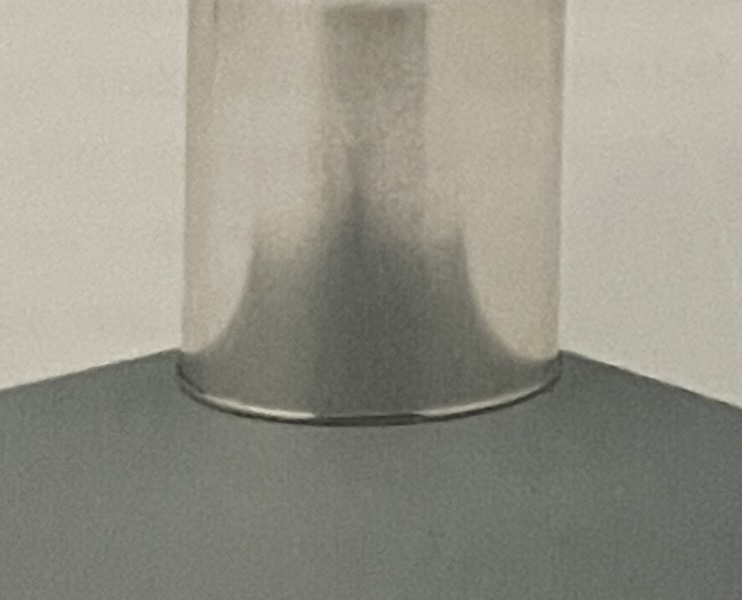
Flat paint absorbs light, thereby disguising many surface imperfections. Dents, dings, texture changes, and wavy walls all tend to disappear behind the matte finish of a flat paint. Because it hides blemishes so well, you can often get by with only a single coat. On the downside, flat paint tenas to show dirt and usually doesn’t stand up well to washing or scrubbing

Eggshell hides many imperfections but is a bit smoother than flat paint, meaning it reflects more light. It’s also easier to wash so you can go longer before repainting. Because of its washability, it has become a popular sheen for walls.

Satin. Think of washability when you think satin— this finish is ideal for kitchens, bathrooms, hallways, kids’ rooms, woodwork, and trim. Silky satin paint looks good on walls in high-traffic rooms but is durable enough to stand up to dirt and repeated cleaning.

Semigloss. This finish offers both washability and shine. Semigloss reflects between 35 and 50 percent of the light that hits it, so most people find it too shiny to use on their walls, It is extremely durable, however. Semigloss is well-suited to surfaces that get a lot of handprints— woodwork, trim, cabinets, and doors. For the same reason, its also popular for kitchens and baths .

Gloss. Choose glossy paint for utility rooms or playroom walls, or for trim that gets a lot of abuse. A high-gloss shine may be discomforting on walls, however. Against the mirror-smooth reflective finish, even minor surface imperfections can suddenly look like glaring errors.
🔔 IMPORTANT SAFETY NOTICE – LEAD PAINT DANGER
Paint made before 1978 may contain lead, which is very hazardous, especially to young children. If you remove or sand paint, first test it for lead with an inexpensive kit sold at home centers or paint stores.
(The lead paint may be hidden beneath one or more top coats.)
Ask local authorities or check with the EPA at www.epa.gov for advice on how to remove lead-base paint safely. Children who have lived or played in homes with lead paint should have a simple test (given by a doctor) for lead exposure.
Recent Posts
-
Cleaning and deglossing
Glossy paints dry to a hard, nonporous surface, making it almost impossible for new paint to adhere effectively. The glossy surface lacks what painters call “tooth,” a slight…
4 min read
-
Priming and painting walls
The process of painting walls and ceilings is the same, and priming both surfaces before painting is essential for a high-quality finish and cost-effective results. Neglecting to prime…
4 min read
-
Preparing to paint
Skill level: 3 🔘🔘🔘⚪️ ⚪️ Time to complete: Experienced: Variable Handy: Variable Novice: Variable Materials: Tools: 1. Move furniture away from walls and protect floor and baseboards with…
4 min read
-
Priming is essential
Priming is as important as painting for a professional-looking finish. This step can make the difference between a smooth, stain-free finish and one that looks blotchy or streaked-it’s…
4 min read
-
Painting Protection
Protecting yourself When performing tasks such as sanding, painting, or working with solvents, you are exposed to particles and fumes. Since certain ingredients in paints and varnishes are…
4 min read
-
Spraying paint
Sometimes, you may have to tackle a massive painting project, like painting an entire house, or a job that requires getting paint into every small space, like painting…
4 min read


